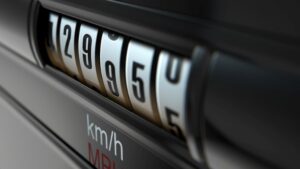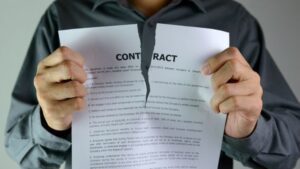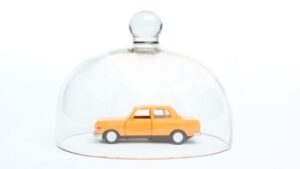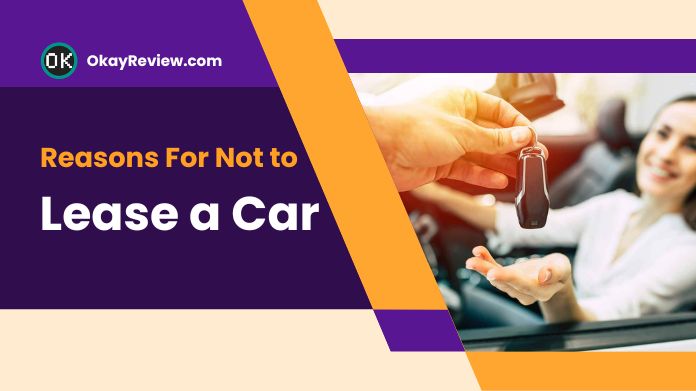Are you considering leasing a car? Before you decide, consider our 10 reasons not to lease a car to explore the potential drawbacks of it.
While leasing may appear appealing due to cheaper monthly payments and the attraction of driving a new car, some may have better options.
Okayreview will go over 10 reasons not to lease a car; we’ll look at the downsides of leasing and help you make an educated decision, from less flexibility to increased long-term expenditures.
Let’s explore the 10 reasons not to lease a car that might make you think twice before signing that lease agreement.
Table of Contents
Things to Know Before Leasing a Car
Before entering into a car lease, a few critical aspects must be considered. First, putting money aside for a down payment can drastically lower the lease amount and monthly expenditures.
While it is not required, a down payment might help you save money in the long run.
It is critical to understand the overall cost of the lease, including all fees and penalties. Monthly payments may appear appealing, but it is essential to read the tiny print.
Credit score restrictions apply to leasing, just like financing or acquiring a loan. To determine the risk, the loan firm evaluates the consumer’s creditworthiness.
Individuals with bad credit may find leasing a used automobile a reasonable alternative since it offers reduced monthly payments and accommodates their financial circumstances.
Legit 10 Reasons Not to Lease a Car
While it may appear an enticing alternative, it is critical to understand the 10 reasons not to lease a car before entering into a lease arrangement. We will look at 10 reasons not to lease a car; you may have better options.
Examining these factors will provide you with vital information allowing you to make a better-educated choice about whether leasing is the best option.
1. Mileage Limit
 A car leasing contract specifies a mileage restriction to define the maximum number of miles you may drive each year.
A car leasing contract specifies a mileage restriction to define the maximum number of miles you may drive each year.
Excessive mileage charges apply if this limit is exceeded.
While this may be fine for infrequent drivers, individuals who commute regularly may find it inconvenient.
Lease contracts often set an annual mileage limit of 10,000 to 12,000 kilometers. Even if you don’t plan on driving much, this constraint might limit your sense of freedom and autonomy.
When getting into a leasing agreement, evaluating your driving patterns and mileage requirements is critical.
2. You’re Paying for Something You Don’t Own.
 Leasing an automobile entails paying money for something you do not own.
Leasing an automobile entails paying money for something you do not own.
Instead of owning a car, leasing entails making monthly payments for the lease contract term without obtaining ownership.
Leasing, like renting, demands a significant financial investment for a brief privilege of usage.
You return the automobile after the lease, and the leasing company may charge additional costs. If you want to buy the car later, you may spend more than if you finance it.
3. Fees for Early Lease Breaking
 Breaking a lease in a short time might have serious financial consequences.
Breaking a lease in a short time might have serious financial consequences.
Car leasing businesses frequently enforce severe no-compromise repayment rules, compelling lessees to pay the outstanding lease debt and a significant lease-break cost.
While auto dealers may emphasize cheaper monthly payments, they frequently omit to highlight the costs of early termination.
4. Lease Terms Stand After an Accident
 If your car is totaled in an accident and your insurance does not cover the whole amount owing, you may still be obligated to pay the leasing company a sizable fee.
If your car is totaled in an accident and your insurance does not cover the whole amount owing, you may still be obligated to pay the leasing company a sizable fee.
Your lease payment will stay the same if you do not have gap coverage, leaving you financially saddled for a car you can no longer drive.
To protect yourself in such tragic situations, it is critical to understand your lease conditions and seek gap coverage.
5. You Can’t Customize a Leased Car
 Customization possibilities are restricted when leasing a car.
Customization possibilities are restricted when leasing a car.
Most lease agreements forbid changing or recoloring the vehicle and require it to be returned in its original condition.
Even small modifications, such as window tinting and installing subwoofers, must be removed. Unlike buying a car, which allows unlimited customization, leases limit changes, including performance upgrades.
The dealer anticipates that the car will be returned to its original condition, with just reasonable wear and tear.
6. You Must Keep the Leased Car in Perfect Condition
 Because you are borrowing the vehicle, it is critical to keep it in excellent functioning order while leasing a car.
Because you are borrowing the vehicle, it is critical to keep it in excellent functioning order while leasing a car.
Before returning the vehicle to the dealer, you should address any mishaps or damages.
The dealer determines the acceptable condition, and returning the automobile in bad condition may incur extra charges.
Replacing the leased car in the same condition it was acquired is critical to prevent fines for severe damage.
7. High Fees and Auto Insurance
 Because of the dealer’s obligation for greater coverage limits, car insurance premiums for leased automobiles tend to be higher.
Because of the dealer’s obligation for greater coverage limits, car insurance premiums for leased automobiles tend to be higher.
Furthermore, leased vehicles may incur additional registration expenses depending on the state.
These considerations and the requirement of carrying full coverage insurance can dramatically raise the overall cost of leasing a vehicle versus owning one.
8. Maintenance and Repairs Cost
 You are responsible for all maintenance and repairs while leasing an automobile.
You are responsible for all maintenance and repairs while leasing an automobile.
You must return the car in the same condition as it was received, paying for maintenance and suffering fines for excessive wear.
Despite not owning the vehicle, you are responsible for its maintenance and the accompanying dangers.
9. Personal Usage Limitation
 Personal usage restrictions are frequent while leasing an automobile.
Personal usage restrictions are frequent while leasing an automobile.
Certain leasing agreements may restrict car usage, such as preventing commercial use or restricting the roads you drive on.
Compared to buying a car, leasing frequently provides less freedom regarding the time of possession and legal vehicle activities.
10. A Lease Has a Higher Interest Rate Than a Buy
 Monthly payments on a lease may be lower than on a loan, but you will pay more in interest.
Monthly payments on a lease may be lower than on a loan, but you will pay more in interest.
Because of the lack of collateral, lenders demand higher interest rates. As a result, most of your payments will cover interest, making it an unfavorable investment.
Leasing is similar to renting; if you buy the automobile after the lease, you may expect to pay thousands more than if you financed it outright.
Final Words
While car leasing may seem enticing with its lower monthly payments, it’s essential to consider the potential drawbacks.
Ultimately, making an informed decision based on your unique circumstances will ensure a more satisfying and cost-effective car ownership experience.

